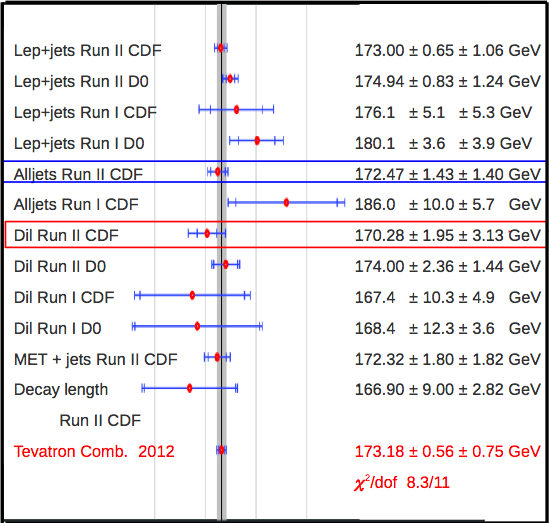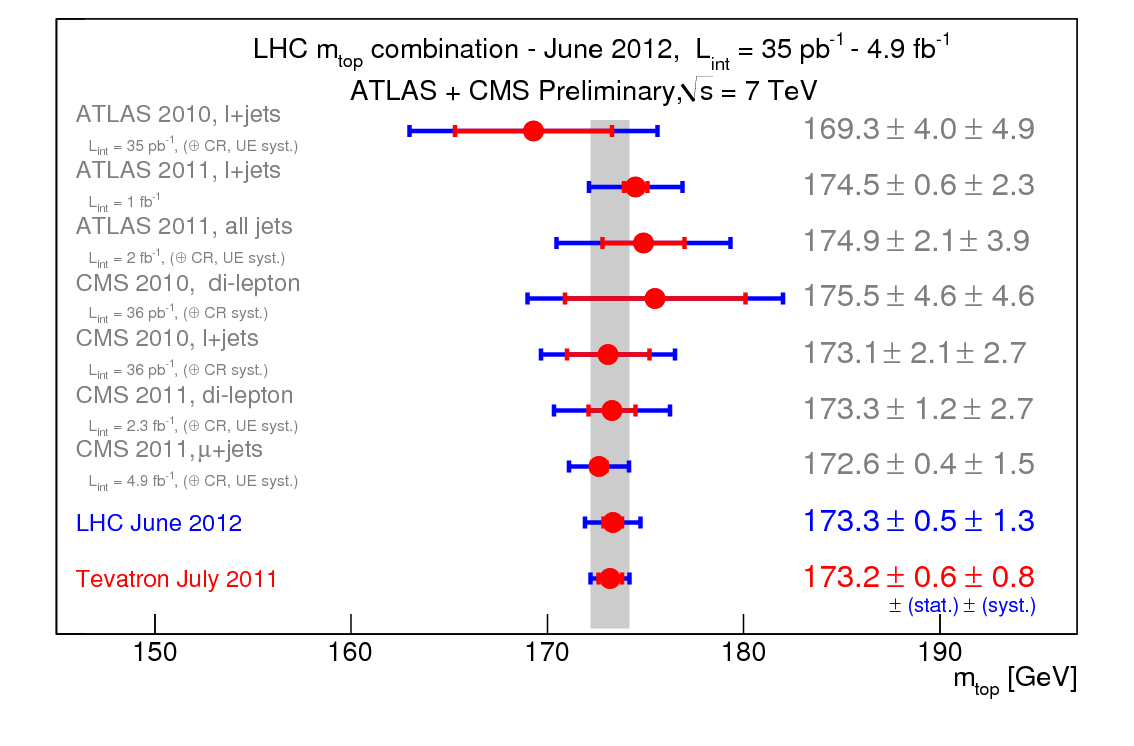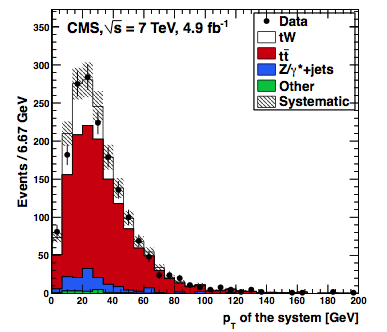TOP 2012 - Part 2
26 September 2012 | By
Welcome back, dedicated top quark enthusiast. I’m sure you’ve all been waiting on the edge of your seats for an update from TOP 2012, and I can now confirm that a combined team of LHC & Tevatron physicists narrowly beat a mixed team of physicists from LHC & Tevatron at croquet.
Congratulations to both colliders on their wins and losses, and to the theorists, whichever team you ended up on! How many jokes were there about ‘conservation of angular momentum’ and ‘pileup’ you might be wondering? Too many, and we’ve all agreed not to speak of it again.
A big mass with a small error
‘Finally, some physics,’ I hear you cry! I will surely be doing an injustice to many by singling out any one result, and as a young PhD student I probably won’t even pick out the most significant, but I can’t help but look at the LHC and Tevatron mass combinations and think, ‘Cool!’

Performing a top mass measurement is far from easy, even in the most agreeable of decay channels. Presented at the conference were nothing short of 20 different mass measurements[1] that not only have overcome the huge challenges unique to each analysis, but have managed to combine these results to obtain a measurement of staggering sensitivity. This may sound easy to the uninitiated but when done correctly these combinations are a vast undertaking.

The Tevatron plot you can see above has an uncertainty of less than 1% on the final combination. One percent! Perhaps even more exciting is that the Tevatron hasn’t finished analysing all of its data. Many of these results will be updated to the final dataset, and of course the LHC is catching up fast! Perhaps if we all donate the required offerings of coffee and Red Bull, and pray to the gods in charge of the grid, we may just see a world combination before too long.
World leading measurements!
Let’s face it, we all have a barely completely justifiable sense of loyalty to our experiments. But top quark physics is a broad field, and it would be criminal not to point out a few of my favourite highlights from all of the experiments.
ATLAS: Spin correlation

Convenors would probably argue about this choice for ATLAS, but I think it’s a great little analysis, with some really talented blogger/physicists working on it. These types of angular distributions are excellent probes for non-resonant new physics and a lot of attention has been paid to them at the conference. Though I picked out ATLAS, new results are also available from CMS (also pictured), and DZero and CDF are well worth a read.
CMS: W associated single top production

Hot off the press, this analysis was approved just in time for this conference. Soon to be submitted to Physical Review Letters (PRL), this cross section represents the best known evidence for the W boson associated single top production channel. This channel plays an important role in many analyses and understanding this production mechanism will be crucial in later results.
DZero & CDF: Harder, better, faster, stronger, forward, backward!

When I asked a DZero colleague which was his favourite analysis, he laughed and bought me a beer. I took this to mean that he likes them all and therefore I picked my favourite. Combined with CDF, both experiments provide fascinating results on one of the most interesting anomalies observed at the Tevatron, the top forward backward asymmetry.
This is a phenomenon unique to the Tevatron collider[2], as the Standard Model predicts practically no asymmetry. Nevertheless, CDF and DZero have consistently measured an unexplained asymmetry for several years and the question on everyone’s minds is: Could this be an effect from new physics? Time will tell…
TOP 2013:
Hopefully you now have a nice overview of what has been a fantastic conference. There were far too many results to do them all justice, but if you’re after a detailed description of each talk (presented in a sarcastic, British style), then feel free to fly me out to your institute or nearest luxury spa/resort at your convenience. For those not blessed with a limitless travel budget, find your nearest top quark physicist and ask them to explain it to you over a beer.
If you wanted a ‘what to look out for’ summary, personally I’d say angular correlations, mass combinations, and interplay with the Higgs sector. Of course that’s from an experimentalist point of view and I’ve barely touched on the theory. Keep an eye out for the public results, and for those with Indico access you can find the slides from all talks here.
We now have a long year to wait until TOP 2013, and I for one am counting the days. See you all in Durbach, Germany!
[1] Tevatron - 12 (3 new), LHC – 8 (4 new)
[2] The LHC is a charge symmetric proton-proton collider and therefore has no ‘forward-backward’ asymmetry. One can define a ‘forward-central’ asymmetry that probes the same physics and a great deal of attention is paid to this at ATLAS, CMS and now also LHCb.




